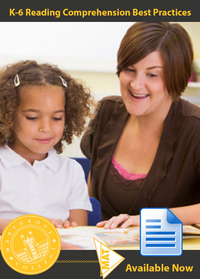
They respond to texts differently than you do
One of the most exhilarating things about teaching reading and discussing texts is that they can be viewed through a variety of lenses. Texts, like language, are malleable: they mean different things to different people.
There are too many students who share this experience: At the teacher’s request, students prepare a response or opinion piece on a book, but receive low marks because they did not give the “right opinion.” If you’re asking for an opinion piece, hold up your end of the bargain and accept it for what it is. Reward students for their efforts, allow them to revise their work, and help them develop their ideas.
They can’t read as fast as their peers
Why are we always in such a hurry? Slow down and allow your reluctant readers to set their own pace, even if it means they “fall behind.” They may be slower than their peers, but one thing is for sure: pushing them to read faster isn’t going to help build their confidence, their comprehension or their enthusiasm for reading.
They are anxious about reading aloud
Students are often asked to read aloud; less often are they given the opportunity to silently read the text first. This might be worth reconsidering.
If you’ve ever agreed to read publicly, chances are that you requested the opportunity to review the text before you stood in front of an audience. Why? Because you didn’t want to stumble over words or make silly mistakes. Naturally, our students feel the same. Most real-world reading happens silently, so doesn’t it make sense to allow our students the opportunity to read silently before shining the spotlight on them?
They are preoccupied by “The Test”
You may not be able to completely abandon the multiple-choice test, but when given the chance, allow students to respond to what they’re reading. With your guidance you can help readers make connections and actually discover themselves in a text. Instead of posing questions that have predetermined answers, try some of the following:
- What about this really excites (or bothers, or puzzles, or challenges) me about this book?
- Should the character(s) have done something different? Why or why not?
- What would I have done in this situation and why?
- What caused this situation?
- What are the consequences?
- What does this have to do with my life?
- Do you see any similarities between this book and any of the others you’ve been reading?
They read texts that adults don’t value
We’ve been using the phrase “reluctant readers,” but the fact of the matter is that we don’t really believe any of our students are reluctant about reading.
All of our students read—they read all the time, in fact. If you need proof, give something a try: Ask your students if they text. Ask them if they update their Facebook pages or write on their friends’ walls. Do they like gossip magazines, comic books, blogs, and foreign films? We bet they do.
If we want our “reluctant readers” to shed their reluctance, we must acknowledge that their “texts”—no matter how low-brow we consider them—are legitimate forms of reading.
© 2025 Created by Steve Hargadon.
Powered by
![]()
